Maurice advances the traditional capillary electrophoresis technique by automating protein profiling by size or charge. If cIEF and CE-SDS data are needed for mAbs, ADCs, vaccinations, or virus-like particles, Maurice can do it all. Simply insert one of the preassembled cartridges, insert the sample vials or a 96-well plate, and press the start button.
Users can develop methods in a day and obtain high-resolution, reproducible data within minutes. Multiple software solutions (including Empower and Chromeleon drivers) ensure full compliance.
Purity, identity, and heterogeneity
Maurice: One Instrument for CE-SDS and cIEF
Video Credit: Bio-Techne Inc.
This new enhanced CE platform allows users to quickly transition between cIEF and CE-SDS applications and develop platform methods in one day.
In this video, the experts behind the gold-standard iCE technology describe the primary benefits of the new platform for CE analysts. Maurice simplifies CE with simplified methodology and produces identification, purity, and heterogeneity data on biologics quickly.
How can Maurice help users?
The molecule has complicated charge profiles that are difficult to resolve
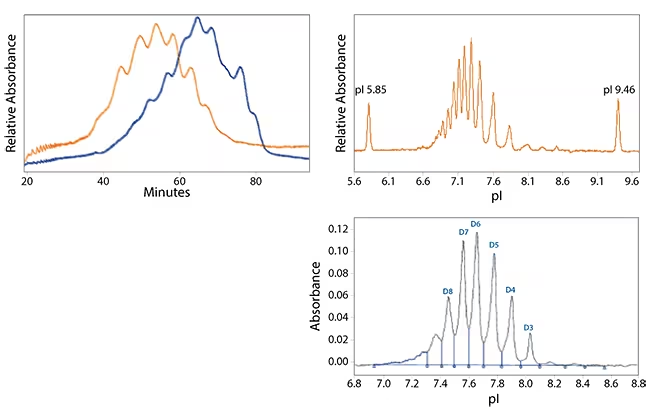
Image Credit: Bio-Techne Inc.
By maintaining the exclusive imaged capillary isoelectric focusing (icIEF) technology, which has been the standard technique for detecting charge heterogeneity, Maurice makes it possible to characterize charge variations at high resolution. Whole-column detection resolves the most difficult molecules, such as fusion proteins and hydrophobic ADCs, and does so without the post-focusing mobilization phase required with conventional cIEF.
The current method is not reproducible and error-prone
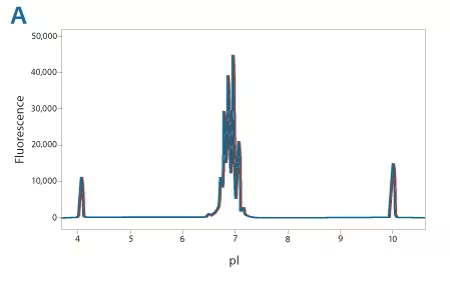
Image Credit: Bio-Techne Inc.
Using a prequalified, ready-to-use cartridge design, Maurice completely automates the cleaning and conditioning of the column. There is no need for time-consuming capillary installation or maintenance. The on-board sample mixing function further improves usability and minimizes user-dependent variability, a problem frequently reported with previous systems.
Many samples with a tight schedule

Image Credit: Bio-Techne Inc.
Maurice generates size-based CE-SDS data in 35 minutes and pI and charge heterogeneity data in under 10 minutes. The rapid separation time, high reproducibility, and flexible workflow make Maurice a true laboratory workhorse. Users can analyze 48–100 samples in a batch or finish developing their method in a single day. It is also possible to create platform techniques and apply them to different molecules.
Concerns regarding cross-contamination between applications
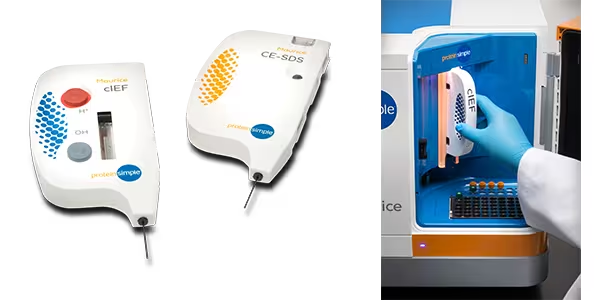
Image Credit: Bio-Techne Inc.
Maurice uses distinct fluid paths for CE-SDS and cIEF applications. Since waste is gathered inside the cartridge, cross-contamination across examinations is not an issue. Controlling hazardous waste is no longer a bother when working with compounds like ADCs.
The sample is limited and tends to aggregate at a high concentration
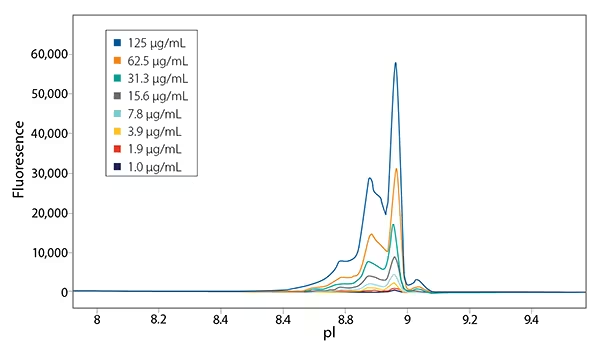
Image Credit: Bio-Techne Inc.
With 3-5 times the sensitivity of UV absorption, Maurice’s native fluorescence detection for cIEF allows users to evaluate samples at concentrations as low as 0.7 µg/ml. Additionally, users can minimize or even eliminate urea in some methods since proteins tend to aggregate less at lower concentrations.
Baselines are also far less susceptible to ampholyte interference and much cleaner, providing users with greater alternatives for pH gradient optimization.
Working in a GMP lab and data integrity is key to the compliance requirement
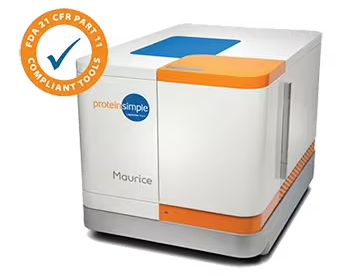
Image Credit: Bio-Techne Inc.
Compass for iCE, the software program that Maurice utilizes to collect, manage, and evaluate data, includes all the features needed to comply with 21 CFR. Using Maurice to assess biotherapeutics in a controlled setting will therefore not present any problems. Empower and Chromeleon drivers are also available, allowing users to control the system directly from their preferred software solution and greatly facilitating the implementation of the instrument within their existing IT infrastructure.